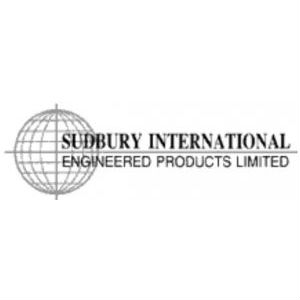 Businesses rely on Sudbury International for top-performing expansion joints
Businesses rely on Sudbury International for top-performing expansion joints
May 15, 2019 REDWIRE is news you can use from leading suppliers. Powered by FRASERS.
Posted by Sudbury International Engineered Products Limited
Expansion Joints, (fabric, metal, rubber, dog-bone), Automatic Recirculation Valves For Pumps, Specialty Sootblowers, Se... Read more
Subscribe
Free REDWIRE e-newsletter

Manufacturers produce ducting expansion joints with many design considerations in mind.
For top non-metallic expansion joints for duct systems, smart businesses turn to Sudbury International Engineered Products Limited. Manufacturers produce these joints with many design considerations in mind, from components to frames and clamping devices. Among these considerations are the specific functions of the joint components.
Sudbury International’s expansion joints for duct systems each include a backup bar, flange reinforcement, a gas seal membrane, an insulating layer, and an insulation retainer layer.
Absorbing vibration and thermal movements
The flexible element is the part of the joint that absorbs vibration and the ductwork’s thermal movements. This element should include a gas seal membrane with at least one optional insulating layer, an insulation retainer layer, and flange gasket. Optional layers are necessary if the system temperature exceeds the gas seal membrane’s temperature range.
The functions of Sudbury International expansion joints for duct systems go as follows:
- Gas seal membrane. This should be designed to handle the internal system pressure and resist chemical attack. Membrane flexibility is important for handling the thermal movements of the ductwork. Because the present membranes in flue-duct applications have temperature limitations, users may need additional thermal protection.
- Insulating layers. These components provide a thermal barrier to make sure the inside surface temperature of the gas seal membrane does not exceed its maximum service temperature. Insulation may also help to reduce or eliminate condensate problems.
- Insulation retainer layers. Retainer layers keep the insulating layers in place and offer protection during handling and system operation. For a successful joint design, correct selection of materials that can withstand system temperatures and chemical attack is vital.
- Flange reinforcement (cuff). This protects the gas seal membrane on a multi-layered flexible element from thermal degradation caused by hot metal flanges, backup bars, and bolting hardware.
Because fluoroplastics have high density, users need a flexible gasket that is compatible with the flow media between the metal attachment flange and the fluoroplastic gas seal membrane for a sufficient seal. Sharp edges that may contact the flexible element should be ground smooth or radiused, to prevent element damage.
To learn more, contact Sudbury International.
Share
Posted by Sudbury International Engineered Products Limited
Expansion Joints, (fabric, metal, rubber, dog-bone), Automatic Recirculation Valves For Pumps, Specialty Sootblowers, Se... Read more
